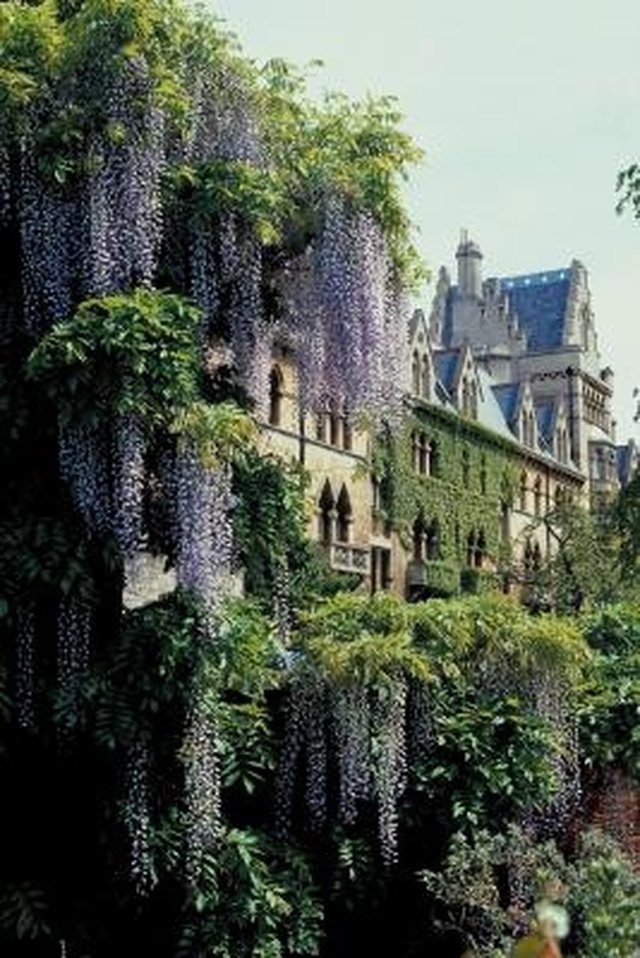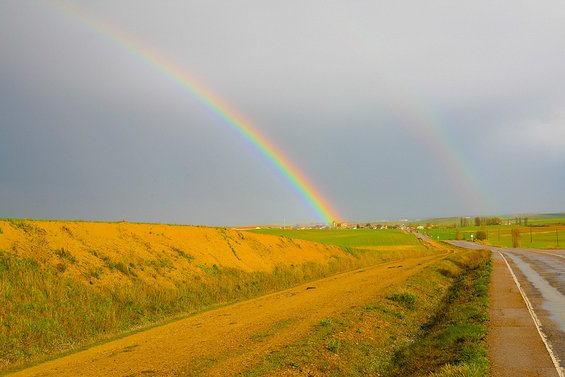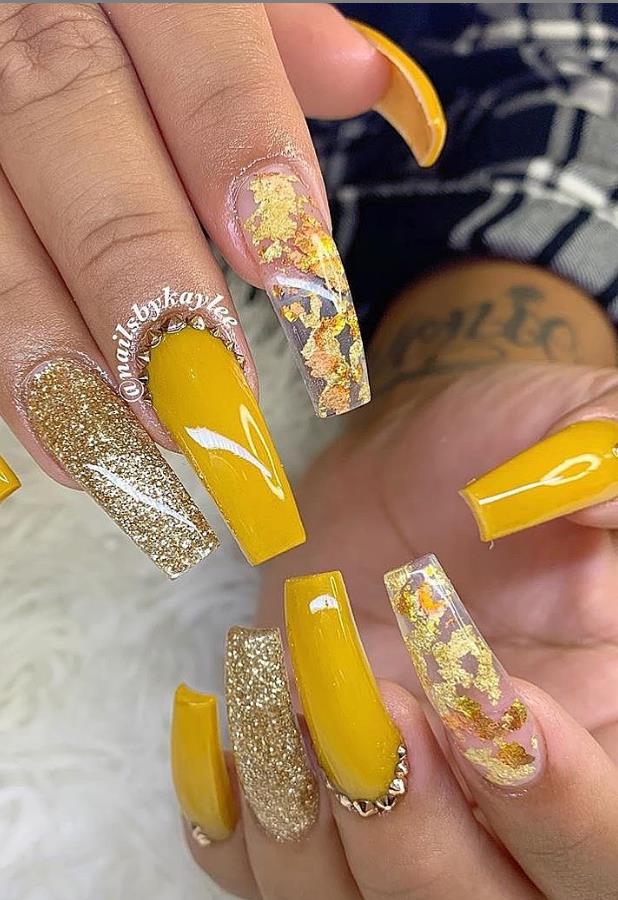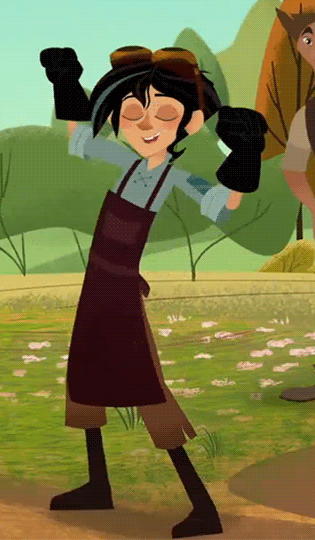Cyan, magenta and yellow are the primary colors of pigments, combining to make black. Red, blue and green are the primary colors of light, combining to make white. Yellow pigment absorbs blue light and cyan absorbs red light.
When white light passes through yellow and cyan ink layers on paper and reflects back off the paper, all but the green light is absorbed so we see green being reflected. In order for green light to be absorbed and not reflected it would have to pass through magenta pigment. In contrast to an additive system, color systems that remove colors through absorption are called "subtractive" color systems. They are called this because the final color is achieved by starting with white light and then subtracting away certain colors, leaving other colors. Examples of subtractive color systems are paints, pigments, and inks. An orange pumpkin that you see printed in a newspaper is not necessarily created by spraying orange ink on the paper.
Rather, yellow ink and magenta ink are sprayed onto the paper. The yellow ink absorbs blue light and a little green and red from the white light beam, while the magenta ink absorbs green light and a little blue and red, leaving only orange to be reflected back. So the distinction in color systems really comes down to the chemical makeup of the objects involved and how they reflect light. Additive theory is based on objects that emit light, while subtractive deals with material objects like books and paintings. "Subtractive colors are those which reflect less light when they are mixed together," says Raiselis.
Those names are already used as the primary colors for light..The primaries for pigments must be distinct to differentiate them from red and blue. We have a clear idea of a hue in our head when when say "red". Color names become less useful when they are used to describe a larger arc of color across the color wheel. It is easier for us all to envision the same color when we say cyan.
What Color Do Cyan And Yellow Make Just as it would be confusing to describe red as an orangeish violet, describing cyan as a greenish shade of blue makes no sense . "When artists' paints are mixed together, some light is absorbed, making colors that are darker and duller than the parent colors. Painters' subtractive primary colors are red, yellow and blue. These three hues are called primary because they cannot be made with mixtures of other pigments."Jul 2, 2019. The primary colors in an RGB color wheel are red, green, and blue, because these are the three additive colors—the primary colors of light. The secondary colors in an RGB color wheel are cyan, magenta, and yellow because these are the three subtractive colors—the primary colors of pigment.
If all three primary colors of light are mixed in equal proportions, the result is neutral . When the red and green lights mix, the result is yellow. When green and blue lights mix, the result is a cyan.
When the blue and red lights mix, the result is magenta. Dyes) are mixed or when several coloured filters are inserted into a single beam of white light. For example, if a projector is fitted with a deep red filter, the filter will transmit red light and absorb other colours.
If the projector is fitted with a strong green filter, red light will be absorbed and only green light transmitted. If, therefore, the projector is fitted with both red and green filters, all colours will be absorbed and no light transmitted, resulting in black. Similarly, a yellow pigment absorbs blue and violet light while reflecting yellow, green, and red light . Blue pigment absorbs primarily yellow, orange, and red light. If the yellow and blue pigments are mixed, green will be produced since it is the only spectral component that is not strongly absorbed by either pigment. Inks, paints and dyes contain pigments that absorb all wavelengths except those that produce the desired color.
If dull mixtures don't make us happy, then our only remedy is to replace the dullest primary color mixtures with new paints. As we've just seen, there is certainly justification for adding a green paint, to brighten up the dull mixed greens, which would give us the artist's primaries palette suggested by Leonardo da Vinci. A blue violet paint would also boost color chroma in mixed purples and maroons.
So we may as well replace all three secondary mixtures with the most intense paints of similar hues. These become our new secondary colors, and join with the primary paints to make a six paint secondary palette. We studied the creation of these color fields experimentally with a setup consisting of RGB light-emitting diodes that cover all color combinations of the three primary colors red, green, and blue.
These light fields were projected through a prism onto a screen or a camera to generate various color fields by refraction. Applying the rules of additive color mixing, a simple RGB model based on the slit spectrum of the light convincingly reproduces the observed color patterns. The parallel use of model and experiment enables a clear recognition of unusual spectra from particularly combined light fields and yields an explanation of their origin.
An additive color is one created by mixing red, green and blue light in different combinations. Additive colors begin as black and become brighter as you add different light. In contrast, a subtractive color is made by partial absorption of different colors of paint or ink. They begin as white and take on the appearance of the added colors or their mixtures. And as far as blue goes, it's not as pure as you think either. "It looks pure because it absorbs strongly in two thirds of the spectrum," Westland says.
"When the blue flashlight circle intersects the green one, there is a lighter blue-green shape," he says. When you mix colors using paint, or through the printing process, you are using the subtractive color method. The primary colors of light are red, green, and blue. If you subtract these from white you get cyan, magenta, and yellow. Mixing the colors generates new colors as shown on the color wheel, or the circle on the right. As you mix colors, they tend to get darker, ending up as black.
The CMYK color system is the color system used for printing. Because a primary triad of high chroma paints has the largest gamut in comparison to any other selection of three paints. As explained below, the gamut of a palette is the total possible range of color mixtures that the palette can make, including the complete range of shades, tones and tints for every hue. However, variations in the lightness and chroma of a color are created by diluting the pigments with water and/or with a black or dark neutral paint.
Water and a dark neutral paint produce the same lightness range in any watercolor palette, but when mixed with the primary paints they substantially dull the saturated colors. Therefore most effective way to increase a palette's gamut is not to expand the lightness range but to increase the chroma of the palette primary paints. Isaac Newton's hue circle was intended to explain light mixtures only, and did not contain primary colors as artists think of them today. Eighteenth century "color theorists" substituted paint mixtures for light mixtures and replaced factual color relationships with simplified, symmetrical and idealized color theory icons. This distorted Newton's concept of the hue circle and misrepresents subtractive color mixing.
Firstly, the primary colors of pigment are magenta , yellow and cyan, as can be seen in printing ink. But the primary colors of light are the secondary colors of pigment, which are red, green and violet. There is a fundamental difference between color and pigment. Color represents energy radiated by a luminous object such as a cathode ray tube or a light-emitting diode .
When you see a red area on a CRT, it looks red because it radiates a large amount of light in the red portion of the electromagnetic radiation spectrum , and much less at other wavelength. Pigments, as opposed to colors, represent energy that is not absorbed by a substance such as ink or paint. The primary pigments are cyan , magenta , and yellow . Sometimes black is also considered a primary pigment, although black can be obtained by combining pure cyan, magenta, and yellow in equal and large amounts. When you see yellow ink on a page, it looks yellow because it absorbs most energy at all visible wavelengths except in the yellow portion of the spectrum , where most of the energy is reflected. "Subtractive colour mixing results when we mix together paints or inks," Westland says.
"It relates to all of the colours we see of non-emissive objects, such as textiles, paints, plastics, inks, etc. "These materials are seen because they reflect the incident light that falls upon them. Take a piece of white paper; this paper reflects all of the wavelengths in the visible spectrum to a very high degree. The yellow ink absorbs the blue wavelengths, leaving the others — which are seen as yellow — to be reflected.
So rather than being additive, in this case we start with white and then start to subtract light at certain wavelengths as we add the primaries." In the RYB color model, the primary colors are red, yellow and blue. The three secondary colors are created by mixing two primary colors. Another six tertiary colors are created by mixing primary and secondary colors. The primary colors of pigment are magenta, yellow, and cyan .
Pigments are chemicals that absorb selective wavelengths —they prevent certain wavelengths of light from being transmitted or reflected. Because paints contain pigments, when white light (which is composed of red, green, and blue light ... In the RGB color model, used to make colors on computer and TV displays, cyan is created by the combination of green and blue light. In the RGB color wheel of subtractive colors, cyan is midway between blue and green.
In the CMYK color model, used in color printing, cyan, magenta and yellow combined make grey. Independent of the color space, you can mix paint to produce other colors. Red and yellow will produce orange, blue and yellow will produce green, and red and blue will produce purple, even though paint works via subtractive color. In these examples, you're producing colors by starting with a secondary color for one or both components rather than all primary colors. Ever had a painting turn to mud when you try to mix colors?
Conventional color theory using red, yellow and blue does not work. It will turn your pictures to mud and frustrate you as you struggle to mix colors that are impossible with this color triad. The same goes for the split primary system where you mix with a warm and cool version of each primary. The split primary system works much better than just using the three primaries but it misses the point about how colors really mix and what the true primary colors are. Before you write me off as a heretic, read on, try a few simple color mixing experiments at home with your colored pencils watercolors, opaque paints and see for yourself.
By changing the way you think about primary colors, your ability to mix colors will improve overnight. If you mix red, green, and blue light, you get white light. Red, green, and blue are referred to as the primary colors of light. Mixing the colors generates new colors, as shown on the color wheel or circle on the right. As more colors are added, the result becomes lighter, heading towards white. RGB is used to generate color on a computer screen, a TV, and any colored electronic display device.
Then compare your mixed colors to the most intense pure pigment paints of similar color. A typical light-emitting display consists of lightemitting elements of Red, Green, and Blue, the three primary colors of light. However, while additive color mixing is used for the light-emitting displays, subtractive color mixing must be used for the reflective displays because the reflective displays do not emit light themselves . Therefore, cyan, magenta, and yellow, the three primary colors of color, are suitable as a display element for reflective displays. I must again make it very clear that I have never claimed in any thread that red, yellow, and blue are the best mixing primaries that mix any color IRL.
It is like traveling from any point A to point B by the shortest direct route. Thinking in these terms reduces the variables, it eliminates the biases that all real world pigments have. I learn where each and every color I use resides, in relation to red, yellow, and blue, even my cyan and magenta.
I mentally start from a single discreet color and not from a mixture of colors. Now I know what my cad red or my pr209 or violet, cyan or whatever will do. I know that the idea that red, yellow, and blue are the primary colors is wrong. What I have said is that I have been told that my complements are all wrong and the wheel that works in a symmetrical arrangement is wrong, yet they both serve me very well indeed..
Many artists are surprised to discover that these mixed warm colors are almost as intense as pure pigment paints. The third and last reason the primary triad palette has been used is because a limited palette creates an effective or desirable harmony of mixed colors, adding a distinctive tone or light to the finished painting. These artists are usually less concerned with color theory than with the paints' handling attributes — transparency, staining, pigment texture, tinting strength and lightfastness. First of all, you can define any colors you want to be the "primary colors" of your color system, so that other colors are obtained by mixing the primary colors.
Although there may be an infinite number of color systems, they are not all equally useful, practical, or effective. For instance, I am free to create a color system where I define light blue, medium blue, and violet as my primary colors. Even though I am free to define my primary colors as such, this color system is not very useful in general because no amount of mixing of these primary colors will produce red, orange, yellow, etc. Therefore, we should make a distinction between a color system and an effective color system.
The effectiveness of a color system is best measured as the number of different colors that can be created by mixing the primary colors of the system. This set of colors is called the "color gamut" of the system. A color system with a large gamut is more able to effectively represent a wide variety of images containing different colors. And green, when added together, produce white light. When overlapped, red and blue form magenta, green and red form yellow, and green and blue form cyan.
These resulting colors are subtractive and when added together, they produce a dark brown. In order to create an accurate photographic reproduction, the color black must be added. The lightness or brightness range of the media is always part of the gamut, although in most gamut illustrations it is the dimension perpendicular to the viewer. But the gamut of a "full color" process in any imaging media is always three dimensional, like a sphere or cube. These 18th century tertiary colors stood for the dull, unsaturated or near neutral colors inside a color triangle, not the hues of maximum chroma or saturation along its sides. The original 18th century color mixing conception was based on the traditional primaries red, yellow and blue.

























No comments:
Post a Comment
Note: Only a member of this blog may post a comment.